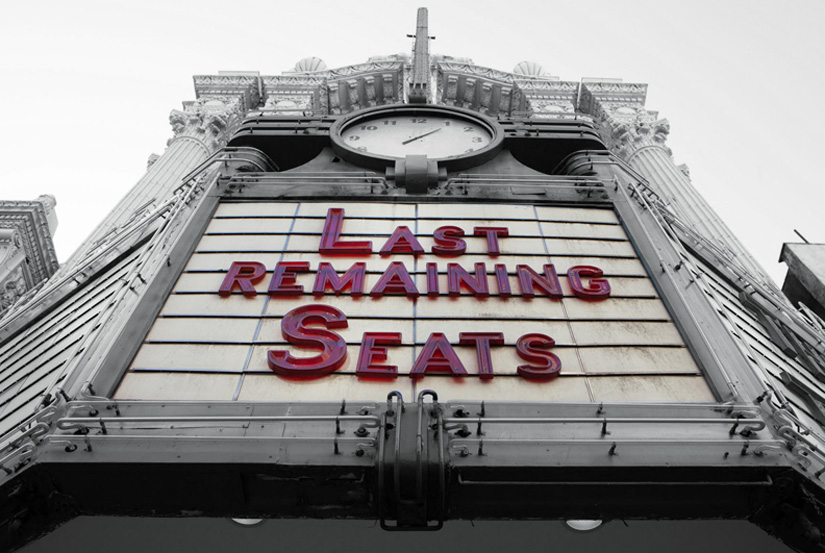
- Industry
Last Remaining Seats: Movie Magic on Broadway
The HFPA and the Los Angeles Conservancy partner in returning film magic to LA’s majestic move palaces. Katherine Tulich reports. The Last Remaining Seats is a yearly film event in downtown Los Angeles that celebrates classic cinema and the glorious movie palaces that once screened them. Now in its 29th year it began as an initiative by the Los Angeles Conservancy, the non-profit historic preservation organization that helps to preserve and revitalize the historic architecture of LA County. The series began as a way to draw attention to the historic theaters that line Broadway in downtown Los Angeles, many of which by the 1980s had fallen into disrepair. “When movie viewing moved to multiplexes, single screen theaters were in trouble and many of the theaters became run down and closed,” said Sarah Weber, Director of Education for the LA Conservancy and the Event Manager for Last Remaining Seats. “The LA Conservancy started programming movies and it became a huge success. So now it’s a tradition every year; there is nothing like seeing a classic film the way it was meant to be seen. The movies get them in the door but the theaters leave the lasting impression.” Among the theaters featured are Sid Grauman’s first LA venue, the Million Dollar Theatre (so named because of its exorbitant cost when it was built in 1918), the intricately detailed French Baroque of 1931s Los Angeles Theatre and the more recently renovated Orpheum, which was built in 1926. A wide array of contemporary and vintage classics will be shown through June from silent films like Charlie Chaplin’s 1931 City Lights presented at the Los Angeles Theatre where the movie originally premiered on January 30, 1931 (Chaplin helped fund the theatre’s completion so that it would be ready in time for the film’s premiere), to more recent favorites like Indiana Jones’ first outing in Steven Spielberg’s Raiders of the Lost Ark (1981). The movie is getting two showings at the newly renovated The Theatre at Ace Hotel on Saturday June 27, with the evening screening presented by renowned film historian, Leonard Maltin. The Theater at Ace Hotel is the delicately restored three-story 1920s ornate movie palace that was once the flagship movie house for United Artists, the film studio formed my screen legends Charlie Chaplin, Mary Pickford and Douglas Fairbanks. It was re-opened by the Ace Hotel group last year. “Undoubtedly one of the most recent success stories the Broadway theater district has been the revival of this beautiful movie palace,” says Weber. This year’s Last Remaining Sears also highlighted another downtown landmark, The Music Center’s Dorothy Chandler Pavilion which screened the 1953 romantic comedy How to Marry a Millionaire on June 20, featuring a glorious Marilyn Monroe and a stylish Lauren Bacall. “While it’s not traditionally a movie theater we started working with them a couple of years ago. The building is now fifty years old and is historic in its own right,” says Weber. “We wanted to broaden that this is an amazing place to see a film. We bring in an enormous screen and it’s very epic and glamorous.” The series also features special guests who can give insight into the history of the films. For the screening of 1971s Willy Wonka & the Chocolate Factory starring Gene Wilder on June 24 at the Orpheum, Madeline Stuart and Peter Stuart, children of the film’s director, Mel Stuart will share memories of how the movie came to be made and their experience being in the movie and on set as children. The HFPA is a major sponsor for the series and the many Golden Globe connections for the films are highlighted including Gene Wilder who was nominated for a Golden Globe for Best Motion Picture Actor – Musical/Comedy, Steven Spielberg who was nominated as Best Director for Raiders of the Lost Ark, and the series opening film Hitchcock’s 1960 horror classic , Psycho which featured Janet Leigh in her Golden Globe Best Supporting Actress winning performance. “We really try to inform people of any Golden Globe connections to the films,” says Weber. “We could not do this without the HFPA. They have been a tried and true supporter and our biggest sponsor for years and have really helped draw attention and help us accomplish this. It’s more than just a film series, it’s about preserving our Hollywood and entertainment heritage and the HFPA has just been remarkable for their support in doing that.”
Katherine Tulich